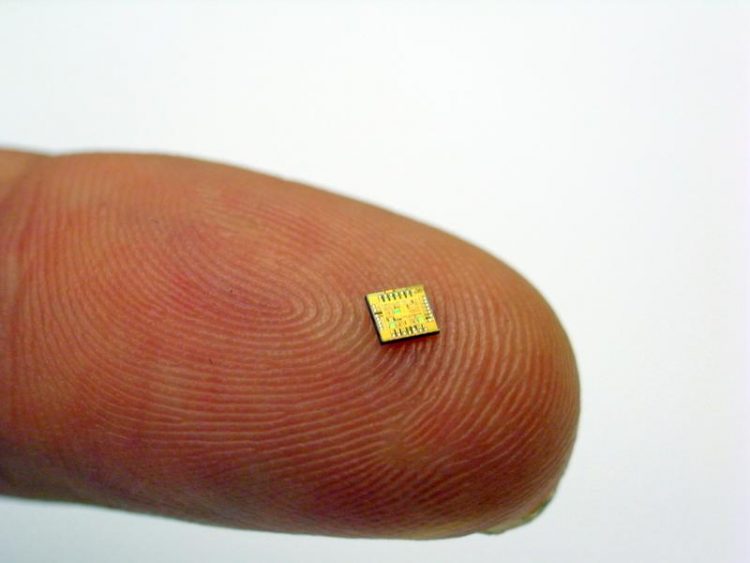A medical lab for the home

Microchip for the electrochemical detection of markers. © Fraunhofer FIT
For years, cardiac diseases have been the most important cause of death globally. Mobile assistance systems that monitor vital parameters, e.g. blood pressure or heart rate, of risk patients in their homes could make their lives safer and more satisfying. A platform supporting this kind was developed and tested by researchers from Fraunhofer FIT, the Berlin Charité, T-Systems and several international partners.
Besides non-invasive sensors this platform integrates technology to take a blood sample and to determine specific markers in the patient's blood while the patient is at home. At its core is the home unit, a compact device located in the patient's home.
It incorporates the necessary software as well as sensors and the analytical equipment. Wearable sensors for measuring vital parameters can be linked to the home unit, e.g. a pulse oximeter with a Bluetooth module in the patient's ear or a blood pressure monitor that sends its data to the system via WLAN.
Using a nanopotentiostat, an electrochemical sensor, the system can measure the patient's glucose, lactate or cholesterol level. In addition, a fluorescence sensor using a laser diode captures the concentration of several cardiac markers.
To detect the risk-indicating markers in the blood, the patient uses a cartridge that she fills with a drop of blood from a prick in her finger. The cartridge is equipped with a microchip and also specially designed, so that the markers in the blood can be detected.
“Miniaturized sensors in the home unit, which can detect traces of the markers down to the nano level, analyze the blood sample”, says Professor Harald Mathis, head of the department 'Biomolecular Optical Systems' of the Fraunhofer Institute for Applied Information Technology FIT.
The home unit aggregates the sensor data and sends the results to the patient's doctor or a medical center via secure Internet connection. A smartphone app presents the health data and the physician's feedback to the patient.
The system was developed by Fraunhofer FIT in cooperation with Charité and T-Systems Deutschland in the BMBF/EU-funded project Nanoelectronics for Mobile AAL Systems – MAS.
Media Contact
More Information:
http://www.fit.fraunhofer.deAll latest news from the category: Trade Fair News
Newest articles

First-of-its-kind study uses remote sensing to monitor plastic debris in rivers and lakes
Remote sensing creates a cost-effective solution to monitoring plastic pollution. A first-of-its-kind study from researchers at the University of Minnesota Twin Cities shows how remote sensing can help monitor and…

Laser-based artificial neuron mimics nerve cell functions at lightning speed
With a processing speed a billion times faster than nature, chip-based laser neuron could help advance AI tasks such as pattern recognition and sequence prediction. Researchers have developed a laser-based…

Optimising the processing of plastic waste
Just one look in the yellow bin reveals a colourful jumble of different types of plastic. However, the purer and more uniform plastic waste is, the easier it is to…



